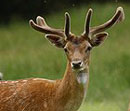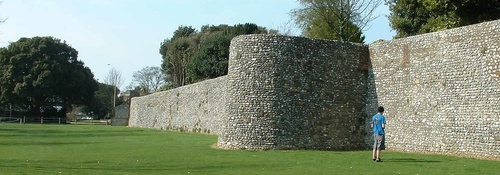Walks
Viewing events by Tim
Morning Walk
Feb. 10, 2016, 9:45 a.m.
Dell Quay, parking near the Crown and Anchor PO20 7EE
Five hundred years earlier it was the 7th most important port in the Kingdom. Small coastal barges and local boats carried wool and grain to London and foreign ports, and brought back coal, timber and cargoes of anything needed for the City of Chichester. In the early 1800s there were over a hundred ships registered here. (conservancy.co.ok)
Mud uncovered between the tides is the richest source of food. Waders, such as Curlew, Godwits, Redshank and Dunlin, probe with their long beaks in the mud for small marine animals like worms, small shellfish and crabs. The plover family of waders pick their food from the mud surface and Turnstones find theirs under seaweed and pebbles. Shelduck sift the surface of the mud for tiny snails. Other birds feed on plants growing on the mud; Brent geese and Wigeon eat green algae and Eel grass ; Coot and Mute Swans are also vegetarians. Others are fish-eaters; they may dive from a height (Terns) or from the water surface (Grebes, Cormorants and sea ducks like Red-breasted Merganser and Goldeneye) or stand and fish in the shallows (Heron). (conservancy.co.uk)
Day walk
Feb. 3, 2016, 9:45 a.m.
This walk will be in Petworth Park.
We're hoping the path will be less muddy than the footpaths elsewhere. Lunch will be in Petworth town followed by a walk around the outskirts of Petworth. Probably 6 to 7 miles.

Petworth Park - home to the largest fallow deer herd in the country
Morning walk
Jan. 27, 2016, 9:45 a.m.
Dens' walk - Weavers Down, Chapel Common
Walk cancelled due to very bad weather
There are the remains of the Roman Road that went to Chichester on Chapel Common. The path that goes to the Black Fox will cross the road, which may (?) be seen as a cutting up to 16m wide and 1/2 m deep, with traces of the original raised, cambered and ditched road surface. There are faint traces on the OS map, showing where the road may appear. Information from Historic England.
There are also rumours of a wild Polecat on Chapel Common!!
Day Walk
Jan. 20, 2016, 9:45 a.m.

Starting in Lavant - a walk to Chichester and a tour of the Walls, built around 200 AD. Lunch in Chichester.
The Roman baths are beneath West Street, the amphitheatre is under the Cattle market and the basilica thought to be under the Cathedral. The local Roman ruler, Tiberius Claudius Cogidibubnus, probably lived at Fishbourne.
Archive
2020
2019
- December (2)
- November (4)
- October (5)
- September (4)
- August (4)
- July (5)
- June (4)
- May (5)
- April (4)
- March (4)
- February (4)
- January (5)
2018
- December (2)
- November (4)
- October (5)
- September (4)
- August (5)
- July (4)
- June (4)
- May (5)
- April (4)
- March (4)
- February (3)
- January (5)
2017
- December (2)
- November (5)
- October (4)
- September (4)
- August (5)
- July (3)
- June (4)
- May (5)
- April (4)
- March (5)
- February (4)
- January (4)
2016
- December (2)
- November (5)
- October (4)
- September (4)
- August (5)
- July (4)
- June (5)
- May (4)
- April (5)
- March (3)
- February (4)
- January (2)
Tags
- rambling (1)
Authors
- Tim (204)
- Philip Hoy (2)